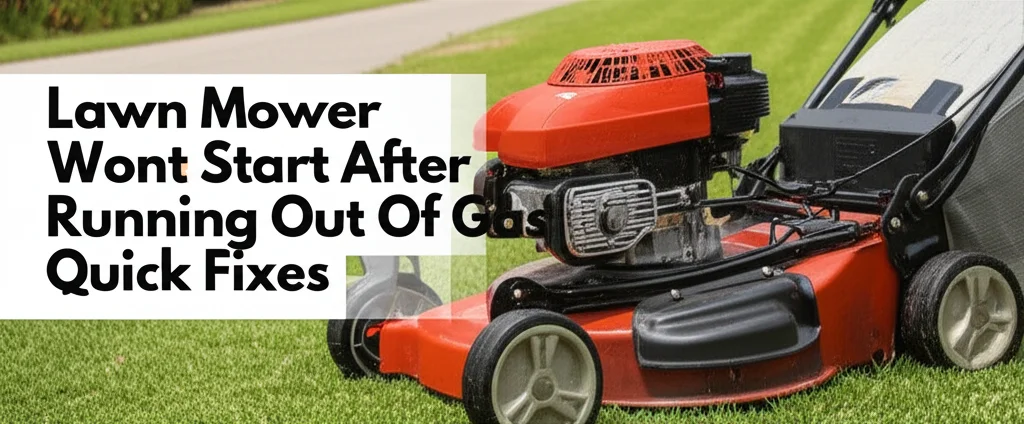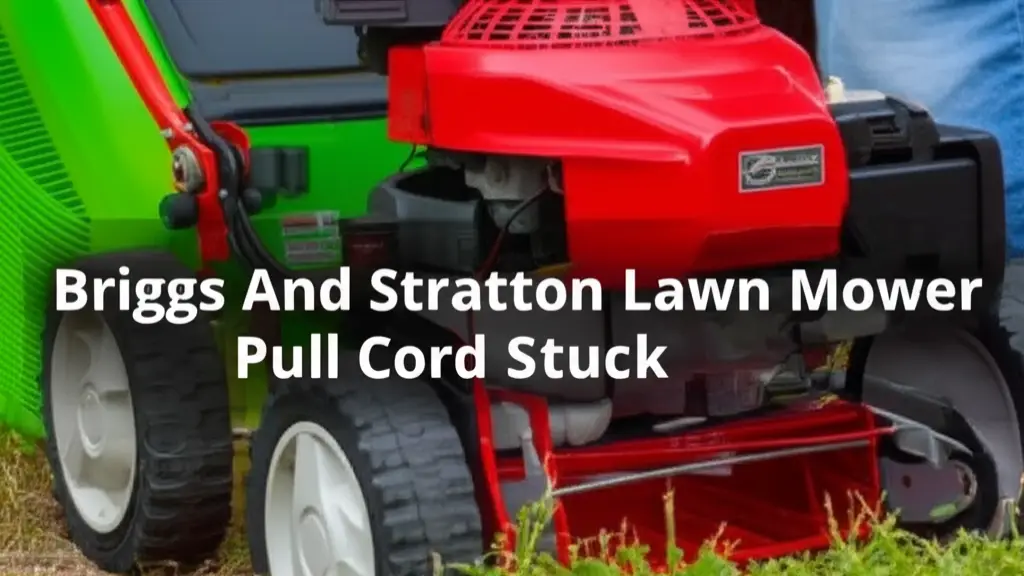· Lawn Mower Maintenance · 7 min read
Lawn Mower Stopped Working After Hitting Rock

Lawn Mower Stopped Working After Hitting Rock: What To Do?
Have you ever been mowing along, enjoying a beautiful day, only to have your lawn mower abruptly stop after hitting a rock? It’s a frustrating experience, but a common one. This article will walk you through the most likely causes when your lawn mower stopped working after hitting rock, and provide a step-by-step guide to getting it running again. We’ll cover everything from simple fixes to more involved repairs, ensuring you can get back to maintaining a pristine lawn. Let’s dive in and get your mower back in action!
Takeaway:
- Always disconnect the spark plug before any inspection or repair.
- Check the blade for damage and ensure it’s properly secured.
- Inspect the shear pins or bolts for breakage.
- Consider professional repair if you’re uncomfortable with the process.
Quick Answer:
If your lawn mower stopped working after hitting a rock, the most common culprits are a damaged blade, broken shear pins, or a stalled engine. Always disconnect the spark plug for safety, then inspect the blade and shear pins. If these are okay, check the engine for obstructions.
1. Understanding the Impact: Why Rocks Cause Problems
Hitting a rock with your lawn mower isn’t just a jarring experience; it can cause significant mechanical stress. The force of the impact travels up the blade spindle, potentially damaging several components. Understanding how these parts work together is key to diagnosing the problem. The blade, designed to spin at high speeds, is vulnerable to bending or even breaking upon impact. This can trigger safety mechanisms or cause immediate engine stall.
2. Safety First: Disconnecting the Power
Before you even think about inspecting your lawn mower, safety is paramount. Always disconnect the spark plug wire to prevent accidental starting. This simple step can save you from serious injury. Locate the spark plug, usually near the engine, and firmly pull off the wire. Once disconnected, you can confidently begin your inspection without the risk of the engine suddenly springing to life. For more information on keeping your mower in top shape, check out this guide on how to clean lawn mower.
3. Inspecting the Blade for Damage
The blade is the first place to look when your lawn mower stopped working after hitting rock. Carefully examine the blade for any signs of bending, cracking, or chipping. A damaged blade is not only ineffective but also dangerous, as it can become a projectile. If the blade is bent, it can cause excessive vibration and further damage to the mower.
Here’s how to inspect the blade:
- Visual Check: Look for obvious bends, cracks, or missing pieces.
- Wobble Test: With the mower off and the blade secured, try to gently wiggle the blade. Any excessive play indicates a problem.
- Balance Check: A severely damaged blade may be unbalanced, causing vibrations.
If the blade is damaged, it must be replaced. Don’t attempt to repair a bent or cracked blade.
4. Checking the Shear Pins or Bolts
Most lawn mowers are equipped with shear pins or bolts designed to protect the engine and transmission from damage. These are sacrificial parts that break when excessive force is applied, like hitting a solid rock. If a shear pin breaks, it disconnects the blade from the engine, preventing further damage.
Here’s how to check them:
- Locate the Pins: Shear pins are typically located on the engine shaft, connecting it to the blade.
- Inspect for Breaks: Look for a clean break in the pin. If it’s broken, it needs to be replaced.
- Replacement: Always replace shear pins with the correct size and type specified in your mower’s manual. You can find replacements at most hardware stores.
Replacing shear pins is a relatively simple task, but it’s crucial for restoring your mower’s functionality.
5. Engine Stall: Clearing Obstructions and Checking Fuel
Sometimes, hitting a rock can simply stall the engine. This is especially common with gas-powered mowers. Before assuming a more serious problem, try these steps:
- Check for Debris: Look for any grass clippings, rocks, or other debris lodged around the blade or engine.
- Fuel Supply: Ensure there’s enough fuel in the tank and that the fuel valve is open.
- Air Filter: A clogged air filter can also cause stalling. Consider how to clean air filter on lawn mower to ensure proper airflow.
- Restart: Attempt to restart the mower. If it still doesn’t start, move on to the next section.
6. Investigating Potential Engine Damage
If the blade and shear pins are intact, and the engine still won’t start, there’s a possibility of more serious engine damage. Hitting a rock can sometimes cause internal damage to the engine, such as a bent crankshaft or damaged connecting rod.
Signs of potential engine damage include:
- Unusual Noises: Knocking or grinding sounds coming from the engine.
- Difficulty Starting: The engine turns over but won’t start.
- Smoke: Excessive smoke coming from the exhaust.
If you suspect engine damage, it’s best to take your mower to a qualified repair technician. Attempting to repair engine damage yourself can be complex and potentially dangerous.
7. Transmission Troubles: Addressing Drive System Issues
While less common, hitting a rock can also affect the lawn mower’s transmission, especially on self-propelled models. If the wheels aren’t turning even when the engine is running, the drive belt or transmission components may be damaged.
Here’s what to check:
- Drive Belt: Inspect the drive belt for cracks, wear, or breakage.
- Transmission Fluid: Check the transmission fluid level and condition. Low or contaminated fluid can cause problems.
- Wheel Engagement: Ensure the wheel engagement lever is properly engaged.
If you’re experiencing transmission issues, consulting a professional is often the best course of action. You might find helpful information on Husqvarna riding mower rear wheel drive not working if you have a similar model.
FAQ: Common Questions About Lawn Mower Issues
Q: Can I sharpen a bent lawn mower blade?
A: No, you should never attempt to sharpen a bent blade. Sharpening a bent blade can further weaken it and create an unsafe situation. It’s best to replace a bent blade entirely to ensure safe and effective mowing.
Q: How often should I replace shear pins?
A: Shear pins should be replaced whenever they break. It’s a good idea to keep a supply of spare pins on hand, especially if you mow in an area with many rocks or obstacles.
Q: What if my lawn mower still won’t start after checking everything?
A: If you’ve checked the blade, shear pins, fuel, and air filter and your mower still won’t start, it’s likely a more complex issue requiring professional diagnosis and repair.
Q: Is it safe to continue mowing if the mower vibrates excessively?
A: No, excessive vibration is a sign of a problem, such as an unbalanced blade or damaged engine components. Stop mowing immediately and investigate the cause. Continuing to mow with excessive vibration can lead to further damage and potential injury.
Conclusion: Getting Back to Mowing
Dealing with a lawn mower stopped working after hitting rock can be a setback, but it doesn’t have to be a major headache. By following the steps outlined in this guide, you can diagnose the problem and, in many cases, repair your mower yourself. Remember to prioritize safety by disconnecting the spark plug before any inspection. If you’re uncomfortable with any of these repairs, don’t hesitate to seek professional assistance. A well-maintained lawn mower is essential for a beautiful lawn, so taking the time to address these issues will ensure you can continue enjoying a perfectly manicured yard. Don’t forget to regularly how to clean lawn mower carburetor without removing to prevent future issues!
- lawn mower repair
- lawn mower troubleshooting
- hitting a rock
- mower blade
- lawn mower safety


